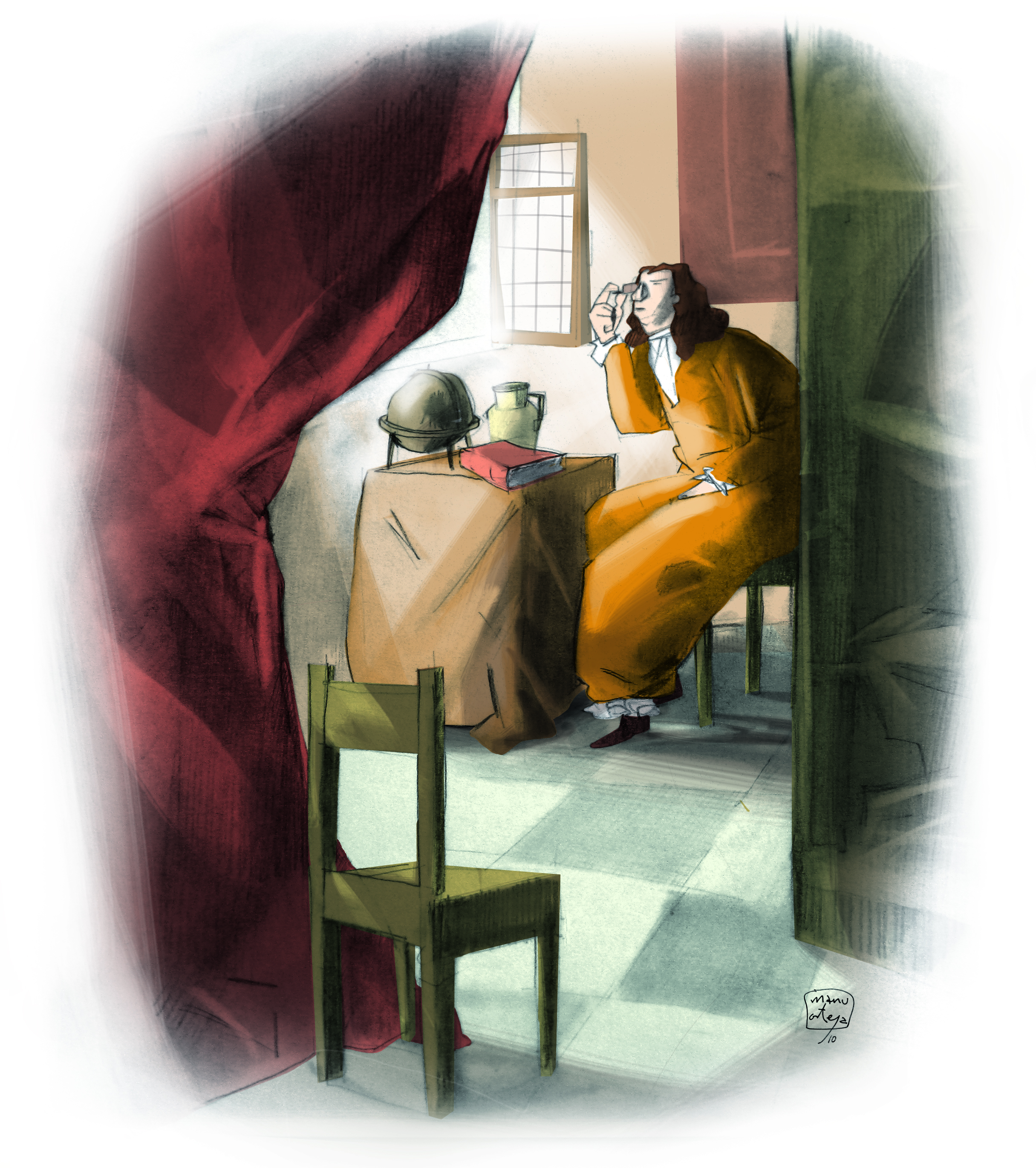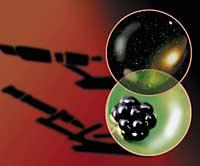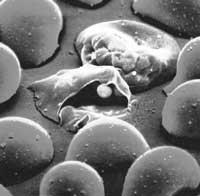Animals of Leeuwenhoek
2011/01/01 Etxebeste Aduriz, Egoitz - Elhuyar Zientzia Iturria: Elhuyar aldizkaria
 400
400
He grabbed the microscope in his hand and approached him looking to the fullest. He started looking for the right angle to get the light he needed. We had to keep the microscope still... What was in that sample of water was incredible: the moving "animal" was full of tiny! Antoni van Leeuwenhoek had a problem: he was seeing beings that no one had seen...
Members of the Royal Society of London were altered by van Leeuwenhoek's letters. The first came in 1673, written in Dutch bass (the only language Leeuwenhoek knew). Leeuwenhoek was not a scientist, but a textile merchant from the city of Delft (Holland), with a basic education. But the most cutting-edge scientists were surprised. And I was seeing things that they didn't even know existed, with microscopes made with their hands, if what I said in those letters was true.
The first letter was credible. Leeuwenhoek narrated how one of the most prestigious members of the Royal Society, Robert Hooke, repeated some of the observations published in the book Micrographia in 1665: a lustful and the sting and eye of a bee. They were very good observations, more detailed than those of Hooke. Members of the Royal Society published in the journal Philosophical Transactions the letter of Leeuwenhoek and encouraged the Dutchman to continue working this way.
He was about forty years old when he started doing microscopes. It was probably in 1668 when he was fascinated by Hooke's Micrographia, which obtained it.
Leeuwenhoek's were very basic microscopes. First he made very small glass lenses, the smaller the better, and put them in a hole made in a plate of brass, copper or silver. The samples were placed on a sharp tip in front of the lens and could be raised and lowered by screws, approached and moved away or rotated. The microscopes were between 2 and 8 cm in total.
These microscopes were not invented by Leeuwenhoek. They were described by Hook himself in his book. But Hooke discarded them for their difficult handling, replacing them with "compound microscopes" of two lenses.
The truth is that Leeuwenhoek microscopes were not accessible to everyone, they were too small and had to be handled with great finesse. It took a lot of skill and patience to see something with them.
But if Hooke got 30 extensions, Leeuwenhoek surpassed 200. The biggest secret was in the lenses. And, precisely, it kept its manufacture secret. We still do not know how he did them*.
An estimated 500 microscopes were performed. And his discoveries were not few. In the second letter sent to the Royal Society on June 1, 1674, he describes the blood cells (erythrocytes) of humans, pigs, birds and fish. And he also calculated its size. He estimated that at least 100 blood cells were introduced in the diameter of a grain of sand, and that a grain of sand was 0.85 mm, which determined that blood cells were less than 8.5 µm (we now know that human erythrocytes have a diameter of approximately 7.7 µm).
That same year, at the end of a letter explaining the details of the structure of the human eye and salt crystals, he suddenly changed the subject and told what he found in a lake next to his house: "...many small animals among them, some were round, some somewhat older were oval. Then I saw two legs around the heads of this last type and two small fins at the other end of his body."
He called these little animal creatures. And he found himself more and more, in the waters of the wells, in the infusions of pepper, in the wines... they appeared almost everywhere. He discovered microscopic algae, protozoa, rotifers, ciliates, etc. As in all previous observations, he described them in great detail.
For their part, the Royal Society did not know how to take those discoveries. Because only Leeuwenhoek could see all these beings. He also said that there were more than a million in a drop of water. For all this to be scientifically acceptable, it was necessary that these observations be repeatable. But the English did not even get to see what Leeuwenhoek saw with their best technology.
Fortunately they had Hooke; if someone could get it, he would have gotten it. And in the end, after several attempts, he got it in November 1677: after leaving for several days an infusion of pepper, he saw "a lot of animals swimming from side to side".
In 1680 the Dutch trader was a member of the Royal Society. But the controversies did not end. When he discovered sperm, for example, the reviews increased. Leeuwenhoek wrote: "I know that many do not accept my writings because they consider such findings impossible. There are things that are saying I'm in witchcraft, teaching people what doesn't exist, but you have to forgive them because they don't get any more. I know quite well that in the whole university there are people who do not believe that in the seed of men there are living beings. But these don't worry me, I know I'm doing it right."
In 1683 he made another interesting discovery by analyzing a sample extracted from his teeth. He discovered a lot of animals: "the bigger ones had very fast and strong movements, they moved at full speed, like the fish in the water." He then takes samples of two old men who did not clean their teeth throughout their life: "It was incredible how many little animals there were; they swam more intensely than I saw. The larger ones climbed upward with the curved body. The rest were in such large quantities that it seemed that all the water was alive." I was seeing bacteria.
Leeuwenhoek continued to discover until the last day of his life, which he died at age 90. Looking from his microscopes he discovered a new universe. A wonderful universe: "Those animals had movements of this kind, they were fast, different, up, down, turning... it was wonderful to see them."
*Update (28-03-2018):
In the hometown of Leeuwenhoek, at Delft University of Technology (Holland), researchers have just clarified how he made the lenses.
There was no lens light if it was made with polished or blown glass. Leeuwenhoek himself never suggested that he invented a new technique to work the glass blowing. However, he seems to try to keep the secret better.
Delft researchers analyze a Leeuwenhoek microscope using neutron tomography. Thanks to this latest technology, they have been able to analyze the formation of their lens without destroying or damaging the microscope. And they have discovered that Leeuwenhoe was a great glass polisher. Now they want to know if I used some kind of special glass. You will soon discover it through gamma spectroscopy.

Gai honi buruzko eduki gehiago
Elhuyarrek garatutako teknologia






